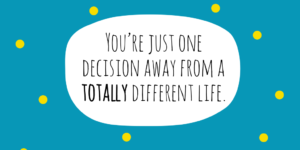On May 17, EnglishLeatherMaster and his boy presented the topic 2 Sides to The Mental Side of Pain for Dating Kinky. The original presentation was free to all who joined us live, and was recorded for Dating Kinky’s PLUS members to access through the Dating Kinky Library (over 400 videos and 550 hours of content!).
Here is a clip from that hour-long show, where ELM and his boy talk over the importance of trust and what new dominants often get wrong.
Transcript:
ELM: I’m hoping that I build trust in you that I can take you somewhere.
boy: I think I said earlier, “It’s about connection and trust for me as well, and I think the think the point is on trust with 3-4 years into our relationship with this, I could not walk—where we saw where we were at that first met—I cannot walk in to meet somebody that I don’t know, and I’ve arranged to meet—a quick hookup or a quick meet—and then just suddenly get into extreme stuff because part of that is I have to keep my brain alive to assess whether I’m in danger, whether it’s safe, whether I can trust, all of that sort of stuff.
And it’s only when you let go of that, and the trust and stuff elevates, can you go quite far with it and that takes time and connection, ultimately.
So it’s all mixed in fire, I think, everything fuels each other.
ELM: Yeah, and I think that’s one of the things that sort of novice Doms get wrong.
Is that they think that everyone can take and they also think…
boy: On that point Master: some can. That I think is worth…
ELM: Well, no, yeah, but that’s not “everyone.” They think everyone can take.
boy: Yeah.
ELM: They think, but they also think that domming means being able to go to the extreme fast.
When actually to me a really good Dom is someone who can get someone to somewhere else, and that doesn’t need to be somewhere extreme.
It could be that they’ve gone from only being interested in having, you know, tickly feather feather dusters on their balls to a light squeeze, and that might be moving someone forwards. You don’t need to get them screaming blue murder.
—
Two huge takeaways in the short 1 1/2 minutes!
First, I love what EnglishLeatherMaster has to say about dominance, that’s you’re not more dominant the more extreme you are, but that the power of taking someone, moving them mentally, from one place to another—through pain or sensation, in this discussion—is the key.
You are LEADING them someplace else. Someplace you want them to go, that they also consent to going to.
It’s not just about whacking people and making them hurt. Or about being big and tough.
And I think that’s a key point that leads back to the point made by ELM’s boy earlier in the video, when he said:
I have to keep my brain alive to assess whether I’m in danger, whether it’s safe, whether I can trust, all of that sort of stuff.
So, I’m going to go off on a tangent here, then loop back around to this the long way.
In the book, “Vagina” by Naomi Wolf, she writes:
“In the lower-lit, more aesthetically pleasing settings, the same women’s orgasm intensity measurements jumped. The same group of women even ejaculated more often in the more pleasant, more relaxing second setting than in the clinical first setting.
If you read the researchers’ careful scientific language, you can see that they are saying that the more “seductive” physical setting led women who ejaculated to have almost twice as many “microvolts” in the measurements of their vaginal contractions and almost four times as many in their uterine contractions during orgasm than women had had in the brightly lit, clinical setting—and what girl doesn’t want that:
The substantial difference between these two measurements on the same subject suggested a variety of post hoc explanations such as partner presence, fatigue, menstrual cycle position, experimental environment, and practice effects. The only variable for which data were available was experimental environment. Subjects were retrospectively divided into two groups; one consisted of those women who had been measured while on a standard gynecological examining table in a physician’s office or clinic, and the second group was comprised of women who were measured while in a reclining chair or upon a sofa in a biofeedback therapist’s office.”
And then to follow that up:
““Recent neuroscience is confirming what Tantra has always maintained—and what the loss-of-self scenes in women’s greatest fictions hint at: climaxing women go into a trance state that is different from what men experience in orgasm.”
And one more:
“for women, unlike for men, orgasm leads to a state that feels like a loss of a certain kind of regulated consciousness, or a loss of a certain kind of self.”
Now, Vagina is specifically focused on AFAB women’s bodies, neural pathways, hormone interactions and more.
However, I wanted to share this because what ELM’s boy said there really resonated with me, and reminded me strongly of this particular section of the book discussing the fact that atmosphere affects a woman’s ability to orgasm or to orgasm as strongly as she could, because she has to be able to (willing to?) actually let go of her control, inhibitions, and presence of mind and safety.
Now, when I read this ten years ago, but that bit did stick with me. I’ve wondered since then about the gendered aspects of that particular study and the comparisons made.
Now, I’m thinking about how the physiology of the AFAB and AMAB orgasms work BY DEFAULT, and thinking about what ELM’s boy said, and wondering about sub space, and how to reach that, to be there, might be very close mentally to what AFAB people experience through orgasms and los of sense of self.
And if that’s true, how critical trust and safety could be to most people to achieve that experience.
And whether or not it is true for MOST people, many people, or only some people (regardless of gender), I think as a dominant it would be my role and responsibility to take my partner from one place to that one (should I choose, and should they consent), and to give them what they need to feel safe and secure and reach that level of experience.
NOTE
As a dominant, I also look for a feeling of trust inside of me before I take other people deeper. I want to know that I can trust them to communicate and engage with me before major forms of extreme play.
As an AFAB woman, I also find that sexual experiences deepen and get better the more I know and like someone, and can totally relax in their presence—and always have.
As a cuckoldress/polysexual, even still I find that my best sexual experiences have an element of trust: either my partner is included, or it’s not my first time with the playmate, and we’ve discovered more of each other’s bodies and personalities.
What are your thoughts?
Do you feel that taking a person from one headspace or pain-space to another is more important as a dominant than the extreme experiences?
Does the idea of trust as a necessary ingredient to really let yourself go (or to help others let go, depending on your side of the slash) resonate with you? Have you experienced anything similar?







